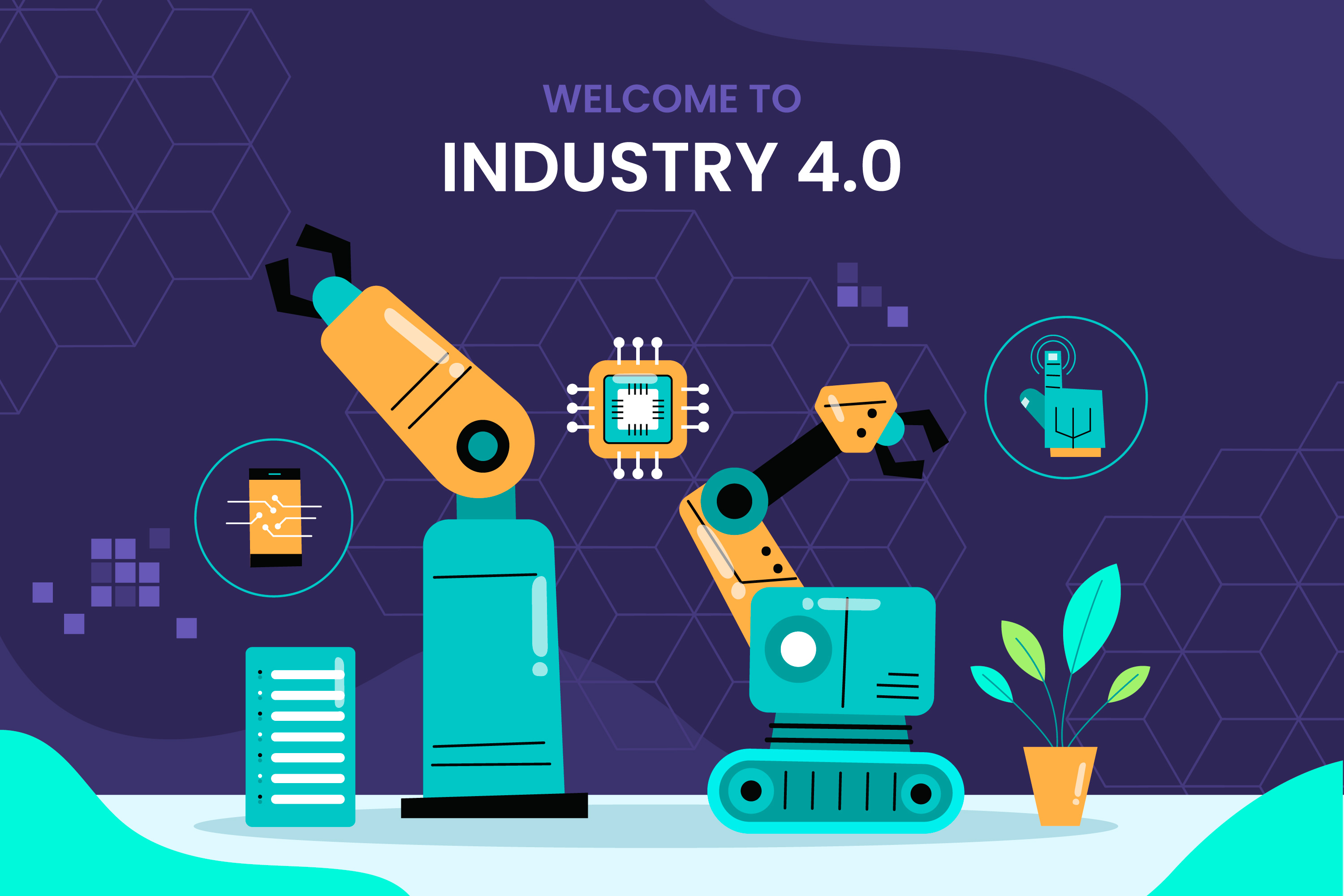In today’s rapidly changing business landscape, the manufacturing sector is undergoing a significant transformation driven by technological advancements. Industry 4.0, or the Fourth Industrial Revolution, is the current trend of automation, data exchange, and machine learning in manufacturing technologies. This article aims to explore the key concepts and economic implications of Industry 4.0, focusing on smart manufacturing, digital transformation, and industrial automation. The article will further delve into the role of MES, ERP, IoT, data-driven manufacturing, predictive maintenance, supply chain optimization, factory digitalization, operational efficiency, real-time monitoring, production optimization, and process integration.
Smart manufacturing is a paradigm that leverages advanced technologies to improve productivity, efficiency, and flexibility in manufacturing processes. Digital transformation is the integration of digital technology into all areas of a business, fundamentally changing how it operates and delivers value to its customers. The convergence of smart manufacturing and digital transformation enables real-time monitoring, data-driven decision-making, and predictive analytics.
Industrial automation is the use of control systems, such as computers or robots, to manage and monitor production processes. The IoT, or Internet of Things, is a network of physical devices embedded with sensors, software, and other technologies to connect and exchange data. The integration of industrial automation and IoT enables real-time data collection, analysis, and decision-making.
MES, or Manufacturing Execution Systems, are software applications that manage and monitor workflow on the factory floor. ERP, or Enterprise Resource Planning, are software applications that manage and integrate business processes, such as planning, purchasing, inventory, sales, marketing, finance, and human resources. The integration of MES and ERP enables real-time visibility into production processes and enterprise-wide decision-making.
Data-driven manufacturing is the practice of using data to optimize manufacturing processes. Predictive maintenance is the use of data and analytics to predict and prevent equipment failures. The integration of data-driven manufacturing and predictive maintenance enables real-time monitoring of equipment performance, identification of potential issues, and proactive maintenance.
Supply chain optimization is the practice of using data and analytics to optimize the flow of goods and services from suppliers to customers. Factory digitalization is the use of digital technologies to automate and optimize factory operations. The integration of supply chain optimization and factory digitalization enables real-time visibility into the entire supply chain, from raw materials to finished goods, and enables proactive decision-making.
Operational efficiency is the optimization of business processes to increase productivity and reduce costs. Real-time monitoring is the practice of using sensors and other technologies to monitor processes and equipment in real-time. The integration of operational efficiency and real-time monitoring enables continuous improvement of manufacturing processes and proactive identification of potential issues.
Production optimization is the practice of using data and analytics to optimize production processes. Process integration is the integration of different production processes to improve efficiency and reduce costs. The integration of production optimization and process integration enables real-time monitoring of production processes, identification of potential issues, and proactive decision-making.
Siemens, a global technology company, has implemented Industry 4.0 technologies, including MES, ERP, IoT, and data-driven manufacturing, to improve operational efficiency, reduce costs, and increase customer satisfaction. GE Digital, a subsidiary of General Electric, has developed Predix, an industrial IoT platform, to enable real-time monitoring and predictive maintenance of industrial equipment.
The implementation of Industry 4.0 technologies has the potential to significantly improve operational efficiency, reduce costs, and increase revenue. A study by McKinsey & Company found that the implementation of Industry 4.0 technologies could generate $3.7 trillion in economic value by 2025. However, the implementation of these technologies also requires significant investment and poses challenges, such as cybersecurity risks and the need for skilled workers.
In conclusion, Industry 4.0, smart manufacturing, and digital transformation are driving significant changes in the manufacturing sector. The integration of technologies, such as MES, ERP, IoT, data-driven manufacturing, predictive maintenance, supply chain optimization, factory digitalization, operational efficiency, real-time monitoring, production optimization, and process integration, has the potential to significantly improve operational efficiency, reduce costs, and increase revenue. However, the implementation of these technologies also requires significant investment and poses challenges. Therefore, it is essential for manufacturers to carefully consider the economic implications of these technologies and develop a strategic approach to their implementation.
Auteur/autrice : j.elaji
Unlocking Continuous Improvement Through ERP Integration
In today’s fast-paced business environment, enterprise resource planning (ERP) integration has emerged as a cornerstone for organizations aiming to achieve operational efficiency and organizational growth. ERP systems are no longer just tools for managing day-to-day operations; they are strategic enablers that drive digital transformation and enterprise performance. By consolidating data and processes across departments, ERP integration fosters a culture of continuous improvement, allowing businesses to adapt, innovate, and thrive in competitive markets.
The journey toward business process optimization begins with a clear understanding of how ERP systems can streamline workflows and eliminate redundancies. When implemented effectively, ERP integration breaks down silos, enabling seamless communication between finance, human resources, supply chain, and customer service teams. This holistic approach not only enhances operational efficiency but also empowers leaders to make informed, data-driven decisions. The result is a more agile organization capable of responding swiftly to market changes and customer demands.
One of the most significant benefits of ERP integration is its ability to support a data-driven strategy. Modern ERP platforms provide real-time analytics and business intelligence, giving decision-makers access to actionable insights. These insights are critical for identifying inefficiencies, forecasting trends, and aligning IT strategy with overarching business goals. By leveraging data, companies can refine their processes, reduce costs, and ultimately improve their financial performance.
Process automation is another key advantage of ERP integration. Automating repetitive tasks—such as inventory management, payroll processing, and reporting—frees up valuable time and resources. This shift allows employees to focus on high-value activities that drive innovation in business and enterprise value creation. Moreover, automation minimizes human error, ensuring consistency and reliability in operations, which is essential for maintaining a competitive advantage.
However, successful ERP integration requires more than just technological adoption; it demands a robust change management strategy. Employees must be trained and supported to embrace new systems and workflows. Leadership plays a crucial role in fostering a culture that values continuous improvement and views ERP as a tool for strategic outcomes. Without buy-in from all levels of the organization, even the most advanced ERP system may fail to deliver its full potential.
Scalability is a critical consideration for businesses looking to future-proof their operations. A well-integrated ERP system grows with the organization, accommodating increased data volumes, new business units, and evolving market needs. This scalability ensures that companies can expand without disrupting their core processes, making it easier to pursue organizational growth and enter new markets. It also provides the flexibility to integrate emerging technologies, such as AI and machine learning, further enhancing decision-making and efficiency.
The impact of ERP integration extends beyond internal operations. It also enhances resource management by providing a unified view of assets, labor, and finances. With better visibility, businesses can allocate resources more effectively, optimize supply chains, and improve customer experiences. This level of control is instrumental in achieving long-term strategic outcomes and sustaining a competitive edge in an ever-evolving landscape.
To maximize the benefits of ERP integration, organizations should adopt a phased approach. Start by identifying pain points and setting clear objectives for business process optimization. Collaborate with IT and operational teams to ensure the ERP system aligns with the company’s unique needs and IT strategy. Regularly review performance metrics and solicit feedback to refine the system and drive continuous improvement.
Finally, ERP integration is not a one-time project but an ongoing commitment to innovation in business. As technology evolves, so should your ERP strategy. Staying ahead requires a proactive approach to updating systems, training employees, and exploring new features that can further enhance enterprise performance. By treating ERP as a dynamic tool for digital transformation, businesses can unlock new opportunities for enterprise value creation and long-term success.


